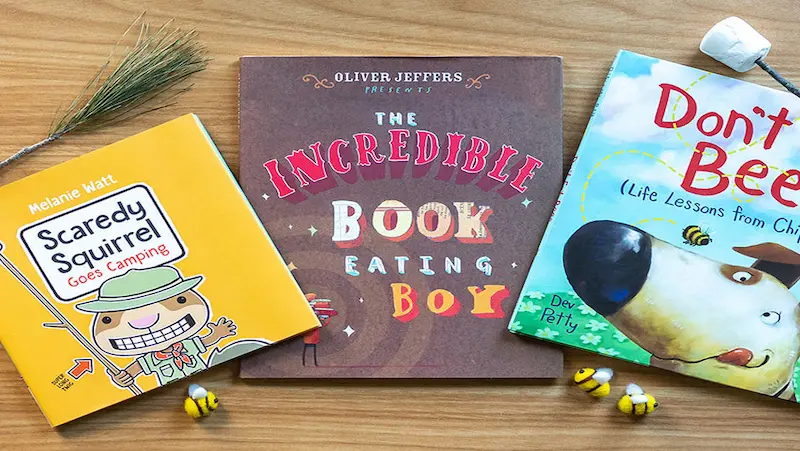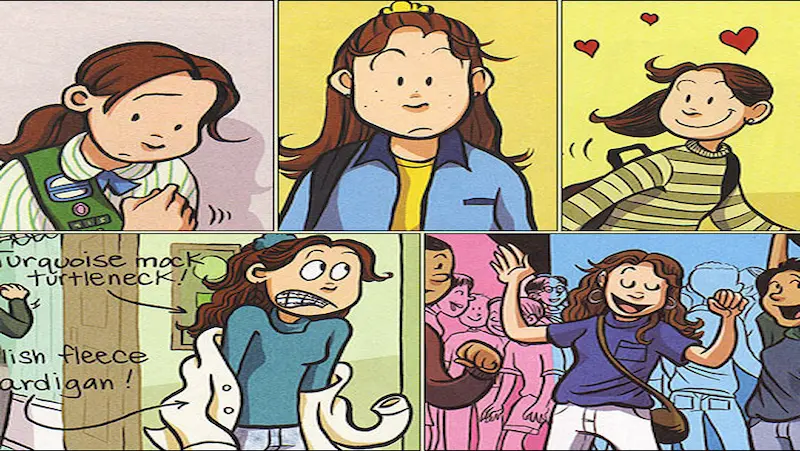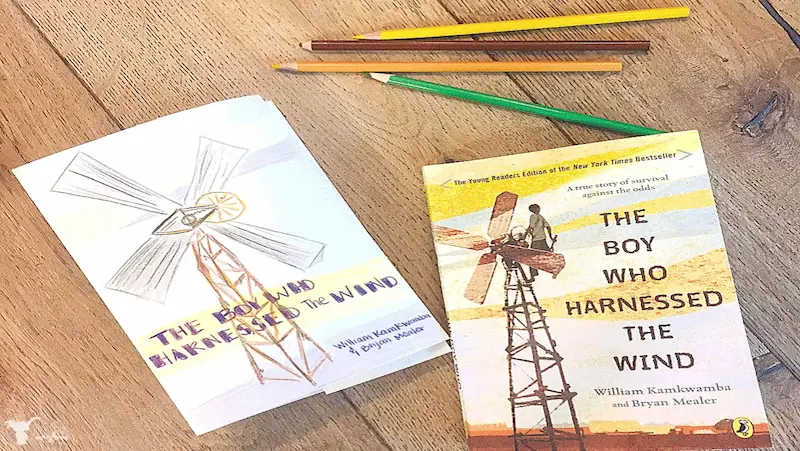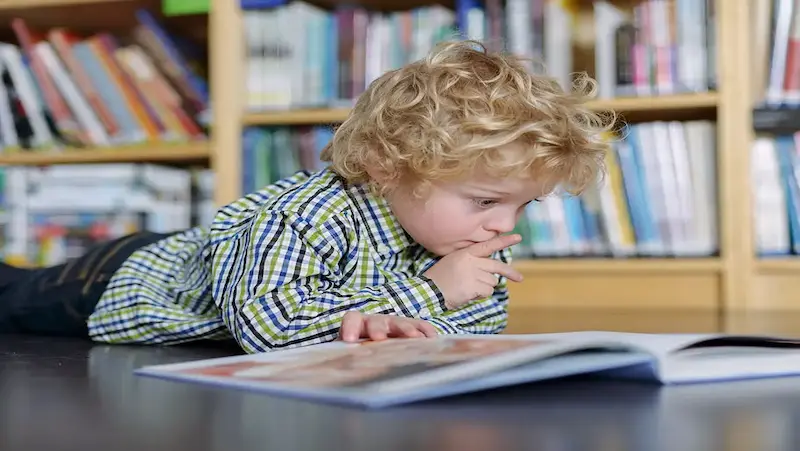In today’s fast-paced digital era, where screens dominate our lives and instant gratification is the norm, the importance of reading for kids cannot be emphasized enough. Reading is not merely a pastime or an academic requirement; it is a gateway to knowledge, imagination, and personal growth.
As parents, it is crucial for us to encourage our children to develop a love for reading from an early age. By fostering a reading habit, we provide them with a multitude of benefits that will have a profound impact on their overall development and future success.
First and foremost, reading enhances a child’s language and communication skills. When children read books, they are exposed to a wide range of vocabulary, sentence structures, and writing styles. This exposure helps them expand their vocabulary, improve their grammar, and develop a richer understanding of language nuances.
The more they read, the more they are exposed to different writing styles, which in turn cultivates their own writing abilities. Strong language skills are vital in every aspect of life, from excelling academically to effective communication in personal and professional settings.

Reading also plays a significant role in cognitive development. Research has shown that reading helps improve concentration, memory, and critical thinking skills. When children read, they need to focus their attention, remember storylines and characters, and make connections between different elements of the text.
These mental exercises strengthen their cognitive abilities, enhancing their overall intellectual growth. Furthermore, reading exposes children to diverse perspectives, cultures, and ideas, fostering empathy and broadening their worldview.
By promoting reading, parents provide their children with a lifelong gift—the ability to explore new worlds, acquire knowledge, and develop vital skills. The benefits of reading extend far beyond the pages of a book, impacting every facet of a child’s life.
So let us inspire and encourage our children to embrace the joy of reading, empowering them to become curious, imaginative, and informed individuals who are well-equipped to navigate the complexities of the world. Encourage enriching indoor activities for kids by introducing them to a world of captivating books, fostering their education, creativity, and a lifelong love for learning from an early age.
Table of contents
The Benefits of Reading for Children
In a world increasingly dominated by screens and digital distractions, the timeless practice of reading continues to hold unparalleled significance in the lives of children. Beyond the sheer joy of getting lost in a captivating story, reading offers a multitude of benefits that extend far beyond the pages of a book.
From enhancing literacy skills to expanding vocabulary and nurturing imagination, the act of reading empowers young minds and sets them on a path of lifelong learning. In this blog post, we will explore the profound benefits that reading brings to children, shaping their lives in countless ways.
Explore a world of imagination and knowledge with enchanting books for kids, igniting a lifelong love for reading and sparking curious minds. Nurture young minds through enriching indoor activities for kids, like reading books, which not only provide entertainment but also promote education, enhancing children’s learning experiences and expanding their horizons.

Improving Literacy Skills
At its core, reading is the foundation of literacy. When children engage with books, they develop fundamental skills such as decoding, phonics, and comprehension. Regular reading practice helps improve fluency, allowing children to read with greater ease and confidence.
As they encounter a variety of writing styles, they become familiar with grammar, sentence structure, and punctuation, ultimately refining their own written communication skills. These literacy skills lay a solid groundwork for academic success across all subjects, enabling children to express themselves effectively and excel in their studies.
Expanding Vocabulary:
Reading introduces children to a vast array of words and phrases that might be beyond their daily conversations. As they encounter unfamiliar words in context, they learn their meanings and how to incorporate them into their own vocabulary.
With an expanded lexicon, children are better equipped to articulate their thoughts, express emotions, and engage in meaningful discussions. A rich vocabulary not only facilitates effective communication but also enhances critical thinking abilities, enabling children to analyze and comprehend complex ideas more efficiently.
Fostering Imagination and Creativity:
In the realm of literature, children are transported to enchanting worlds where anything is possible. Reading ignites their imagination and encourages them to visualize characters, settings, and events in their mind’s eye.
Through books, children are exposed to diverse perspectives, cultures, and historical periods, broadening their horizons and nurturing empathy. As their creativity blossoms, they are inspired to explore their own ideas, write stories, and embark on imaginative play.
This imaginative prowess nurtured through reading fuels innovation and problem-solving skills, cultivating a generation of bright minds ready to face the challenges of the future.
Building Empathy and Emotional Intelligence:
Stories have the remarkable power to evoke empathy in children. As they immerse themselves in the lives of fictional characters, they experience a range of emotions, develop a deeper understanding of human experiences, and cultivate compassion.
By encountering characters facing different challenges and dilemmas, children learn to navigate their own emotions and understand the perspectives of others.
This emotional intelligence honed through reading equips children with invaluable social skills, enabling them to build meaningful relationships and navigate the complexities of the world with empathy and kindness.
Types of Books for Kids
Books are an essential part of a child’s development, igniting their imagination, expanding their knowledge, and fostering a love for reading. The world of children’s literature is incredibly diverse, offering a wide array of genres and formats to cater to every child’s interests and reading abilities. In this blog post, we will explore the different types of books available for kids, ranging from picture books and chapter books to graphic novels and non-fiction books.
Picture Books

Picture books are a staple in children’s literature, often targeted at younger children. These books combine simple text with captivating illustrations, making them a visual delight. Picture books serve as an excellent introduction to reading, with their engaging storytelling and colorful visuals.
They can cover a wide range of topics, from imaginative tales to educational concepts. Popular examples of picture books include “The Very Hungry Caterpillar” by Eric Carle and “Where the Wild Things Are” by Maurice Sendak.
Chapter Books

Chapter books are designed for more advanced young readers who are transitioning from picture books. They typically contain shorter chapters, larger font sizes, and occasional illustrations. Chapter books allow children to develop their reading skills and tackle longer narratives.
They often feature relatable characters and age-appropriate themes. Notable examples of chapter books include the “Harry Potter” series by J.K. Rowling and the “Diary of a Wimpy Kid” series by Jeff Kinney.
Graphic Novel

Graphic novels have gained immense popularity among children in recent years. They combine engaging storytelling with visual elements, employing the use of sequential art and text. Graphic novels appeal to reluctant readers or visual learners, providing a unique reading experience.
They cover a wide range of genres, including fantasy, adventure, and non-fiction. Some well-known graphic novels for kids are “Smile” by Raina Telgemeier and the “Dog Man” series by Dav Pilkey.
Non-Fiction Books

Non-fiction books provide children with valuable knowledge about the world around them. They cover a wide range of topics, including history, science, nature, and biographies. Non-fiction books for kids often use accessible language and include vivid illustrations or photographs to engage young readers.
Examples of non-fiction books include “The National Geographic Kids” series, “The Story of Ruby Bridges” by Robert Coles, and “The Boy Who Harnessed the Wind” by William Kamkwamba and Bryan Mealer.
Choosing the Right Books for Your Child
In today’s fast-paced digital world, it’s essential to instill a love for reading in children. Books not only foster imagination, creativity, and critical thinking but also enhance language skills and broaden horizons. As parents and guardians, selecting the right books for your child based on their age, interests, and reading level is crucial.
In this blog post, we’ll provide you with valuable tips and advice to help you make informed decisions when choosing books that will captivate your child and fuel their passion for reading.
Check out free books for kids.

Understand Your Child’s Reading Level
Before embarking on the book selection journey, it’s essential to assess your child’s reading level accurately. Every child develops at their own pace, so try to gauge their reading skills based on their comprehension, fluency, and vocabulary.
You can consult their teacher or refer to reading-level guides available online or at libraries. This knowledge will guide you in choosing books that align with your current abilities and ensure an enjoyable reading experience.
Consider Age-Appropriate Content
While it’s essential to select books that align with your child’s reading level, it’s equally important to consider age-appropriate content. Books tailored to a specific age group address relevant themes, topics, and challenges children face at different stages of their development.
Keep in mind that children’s interests and maturity levels can vary, so always review the content to ensure it is suitable for your child’s emotional and cognitive development.
Explore Your Child’s Interests
To engage your child in reading, select books that align with their interests and passions. Observe what types of stories, genres, or subjects pique their curiosity. Whether it’s adventure, fantasy, animals, science, or historical fiction, incorporating their interests into the book selection process will ignite their enthusiasm and keep them eagerly turning the pages.
Embrace Diversity and Representation
Children’s literature should reflect the diverse world we live in. Seek out books that feature characters from various backgrounds, cultures, and experiences. Exposing children to diverse perspectives fosters empathy, understanding, and inclusivity. Look for books that celebrate differences and promote positive representation, ensuring your child sees themselves and others in the stories they read.
Encourage Exploration and Variety:
While it’s great to cater to your child’s interests, encourage them to explore different genres, authors, and writing styles. Introducing variety broadens their literary horizons and exposes them to different writing techniques and storytelling approaches. Take them to the library or bookstore and let them browse the shelves to discover new books that spark their curiosity.
Involve Your Child in the Decision-Making Process
Make choosing books a collaborative experience by involving your child in the decision-making process. Discuss their preferences, listen to their opinions, and let them make choices based on their interests. By giving them agency in selecting their reading materials, you empower them and nurture a sense of ownership over their reading journey.
Empower young hearts and minds with uplifting positive affirmations for kids, beautifully embedded within captivating books that nurture self-confidence, resilience, and a bright outlook on life.
Reviews and Recommendations
Books are not just a source of entertainment; they have the power to ignite children’s imaginations, inspire creativity, and foster a lifelong love for reading. However, with an overwhelming number of options available, it can be challenging for parents and caregivers to select the right books for their children.
Fear not, as we have compiled a comprehensive list of the best books for kids, categorized by age range and genre. Whether you have a toddler or a teenager, we have something for everyone. So, let’s dive into the enchanting world of children’s literature!

Age 0-3 (Board Books)
a. “Goodnight Moon” by Margaret Wise Brown: This classic bedtime story with its soothing rhymes and gentle illustrations is perfect for establishing a nighttime routine.
b. “Brown Bear, Brown Bear, What Do You See?” by Bill Martin Jr. and Eric Carle: This captivating book introduces colors and animals through repetitive text and vibrant artwork.
Age 4-6 (Picture Books)
a. “The Very Hungry Caterpillar” by Eric Carle: This beloved tale teaches counting, days of the week, and the transformation of a caterpillar into a butterfly, all wrapped in Carle’s signature collage illustrations.
b. “Where the Wild Things Are” by Maurice Sendak: Join Max on his wild adventure as he tames the creatures of his imagination in this beautifully illustrated and imaginative story
Age 7-9 (Chapter Books)
a. “Charlotte’s Web” by E.B. White: A heartwarming tale of friendship between a pig named Wilbur and a spider named Charlotte, this book teaches valuable life lessons about loyalty and love.
b. “The Magic Tree House” series by Mary Pope Osborne: Follow siblings Jack and Annie on their time-traveling adventures as they explore history, mythology, and science through these engaging chapter books.
Age 10-12 (Middle Grade)
a. “Harry Potter” series by J.K. Rowling: Enter the wizarding world with Harry Potter and his friends as they attend Hogwarts School of Witchcraft and Wizardry. This series is a magical journey filled with friendship, bravery, and the power of love.
b. “Wonder” by R.J. Palacio: A thought-provoking story about a boy with a facial deformity who navigates the challenges of fitting in and embracing kindness. This book promotes empathy and acceptance.
Age 13+ (Young Adult)
a. “The Hunger Games” trilogy by Suzanne Collins: Set in a dystopian world, this gripping series follows Katniss Everdeen as she battles for survival in a brutal televised competition. It explores themes of power, rebellion, and sacrifice.
b, “The Fault in Our Stars” by John Green: A poignant and heartrending love story between two teenagers with cancer, this novel delves into the complexities of life, death, and the pursuit of happiness.
Conclusion
In conclusion, this article has highlighted several key points regarding the importance of reading for children and emphasized why parents should prioritize this activity in their daily lives.
First and foremost, reading plays a crucial role in the development of a child’s cognitive abilities. Research has shown that reading enhances language skills, expands vocabulary, and improves comprehension and critical thinking. By engaging in regular reading, children not only acquire knowledge but also develop important skills that will benefit them throughout their lives.
Reading fosters creativity and imagination in children. Through books, they are exposed to different worlds, cultures, and perspectives, which broadens their horizons and encourages them to think outside the box. This creative stimulation is vital for their overall growth and helps cultivate a lifelong love for learning.
Given these compelling reasons, it is imperative for parents to prioritize reading for their children. By making reading a regular part of their daily routine, parents are laying the foundation for their children’s future success.
They are equipping them with the necessary skills and knowledge to excel academically, but more importantly, they are nurturing their overall development and fostering a lifelong love for reading and learning.
Therefore, let us encourage parents to set aside dedicated time each day for reading with their children. Whether it is a bedtime story, a visit to the library, or simply reading together during leisure moments, every effort counts.
By investing in the power of reading, parents are investing in their children’s future, helping them unlock the doors to endless possibilities and empowering them to become well-rounded individuals.
So, let us prioritize reading for our children and embark on this wonderful journey of exploration, imagination, and growth together.
With a focus on creating engaging and interactive content, BrightChamps aims to ignite a genuine enthusiasm for learning within young minds. Through a diverse range of educational materials, including articles, videos, games, and activities, BrightChamps seeks to foster a lifelong love for exploration and knowledge.
BrightChamps teaches a variety of programs for kids that assist children in developing a foundation in computer programming through coding for kids, activities, interactive lessons, and other means.
BrightChamps’ blog page is a treasure trove of valuable resources that empowers children for a brighter future through innovative education and more.
Frequently Asked Questions
A1: The best books for kids vary by age, but some popular choices include “Goodnight Moon” for infants, “The Very Hungry Caterpillar” for toddlers, “Harry Potter” series for middle-grade readers, and “The Hunger Games” trilogy for teenagers.
A2: Encourage your child to read more books by creating a reading routine, setting a good example by reading yourself, providing a variety of interesting books, discussing the stories together, and making reading a fun and rewarding experience.
A3: Reading books offers numerous benefits for kids, including improving language skills, expanding vocabulary, stimulating imagination and creativity, enhancing concentration, fostering empathy, and developing critical thinking abilities.
A4: You can find affordable books for your child at local libraries, second-hand bookstores, online marketplaces like Amazon, book fairs, garage sales, and by swapping books with other parents or friends.
A5: To choose appropriate and engaging books for your child, consider their age, reading level, and interests. Read book reviews, consult librarians or teachers for recommendations, preview the content, and involve your child in the decision-making process to ensure a good fit.


 We are an army of educators and passionate learners from BrightChamps family, committed to providing free learning resources to kids, parents & students.
We are an army of educators and passionate learners from BrightChamps family, committed to providing free learning resources to kids, parents & students.








